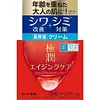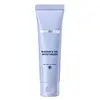What's inside
What's inside
 Key Ingredients
Key Ingredients

 Benefits
Benefits

 Concerns
Concerns

 Ingredients Side-by-side
Ingredients Side-by-side

Niacinamide
SmoothingSodium Hyaluronate
HumectantHydrolyzed Hyaluronic Acid
HumectantSodium Acetylated Hyaluronate
HumectantAcetyl Glucosamine
Skin ConditioningWine Extract
AntioxidantButyrospermum Parkii Butter
Skin ConditioningTocopherol
AntioxidantGlycerin
HumectantButylene Glycol
HumectantCapric Acid
CleansingC20 Olefin
1,5-Pentanediol
SolventPolyglyceryl-5 Triisostearate
CleansingPEG-20 Sorbitan Isostearate
EmulsifyingPolyethylene
AbrasiveDimethicone
EmollientPullulan
Polyvinylalcohol Crosspolymer
Melaleuca Alternifolia Leaf Oil
AntioxidantSalicylic Acid
MaskingCitric Acid
BufferingBehenyl Alcohol
EmollientStearyl Alcohol
EmollientHyaluronic Acid
HumectantNiacinamide, Sodium Hyaluronate, Hydrolyzed Hyaluronic Acid, Sodium Acetylated Hyaluronate, Acetyl Glucosamine, Wine Extract, Butyrospermum Parkii Butter, Tocopherol, Glycerin, Butylene Glycol, Capric Acid, C20 Olefin, 1,5-Pentanediol, Polyglyceryl-5 Triisostearate, PEG-20 Sorbitan Isostearate, Polyethylene, Dimethicone, Pullulan, Polyvinylalcohol Crosspolymer, Melaleuca Alternifolia Leaf Oil, Salicylic Acid, Citric Acid, Behenyl Alcohol, Stearyl Alcohol, Hyaluronic Acid
Water
Skin ConditioningPropanediol
SolventNiacinamide
SmoothingPanthenol
Skin Conditioning1,2-Hexanediol
Skin ConditioningCaprylic/Capric Triglyceride
MaskingEthylhexyl Isononanoate
EmollientMyristoyl/Palmitoyl Oxostearamide/Arachamide Mea
Skin ConditioningAmmonium Acryloyldimethyltaurate/Vp Copolymer
Sorbitan Stearate
EmulsifyingGlyceryl Stearate
EmollientButylene Glycol
HumectantGlycerin
HumectantPhytosterols
Skin ConditioningCaprylyl Glycol
EmollientLactic Acid
BufferingGlycolic Acid
BufferingCarbomer
Emulsion StabilisingStearic Acid
CleansingResveratrol
AntioxidantSodium Hyaluronate
HumectantXanthan Gum
EmulsifyingHeptasodium Hexacarboxymethyl Dipeptide-12
Skin ConditioningGlutathione
Dipotassium Glycyrrhizate
HumectantSorbitan Laurate
EmulsifyingSuperoxide Dismutase
AntioxidantChlorella Vulgaris Extract
Skin ConditioningBeta-Glucan
Skin ConditioningZinc Gluconate
Skin ConditioningHydroxyethylcellulose
Emulsion StabilisingAcetyl Dipeptide-1 Cetyl Ester
Skin ConditioningTetradecyl Aminobutyroylvalylaminobutyric Urea Trifluoroacetate
Skin ConditioningPolyvinyl Alcohol
Magnesium Chloride
Potassium Phosphate
BufferingProline
Skin ConditioningPalmitic Acid
EmollientLysine
Skin ConditioningHistidine
HumectantGlycine
BufferingGlutamine
Skin ConditioningArginine
MaskingWater, Propanediol, Niacinamide, Panthenol, 1,2-Hexanediol, Caprylic/Capric Triglyceride, Ethylhexyl Isononanoate, Myristoyl/Palmitoyl Oxostearamide/Arachamide Mea, Ammonium Acryloyldimethyltaurate/Vp Copolymer, Sorbitan Stearate, Glyceryl Stearate, Butylene Glycol, Glycerin, Phytosterols, Caprylyl Glycol, Lactic Acid, Glycolic Acid, Carbomer, Stearic Acid, Resveratrol, Sodium Hyaluronate, Xanthan Gum, Heptasodium Hexacarboxymethyl Dipeptide-12, Glutathione, Dipotassium Glycyrrhizate, Sorbitan Laurate, Superoxide Dismutase, Chlorella Vulgaris Extract, Beta-Glucan, Zinc Gluconate, Hydroxyethylcellulose, Acetyl Dipeptide-1 Cetyl Ester, Tetradecyl Aminobutyroylvalylaminobutyric Urea Trifluoroacetate, Polyvinyl Alcohol, Magnesium Chloride, Potassium Phosphate, Proline, Palmitic Acid, Lysine, Histidine, Glycine, Glutamine, Arginine
Ingredients Explained
These ingredients are found in both products.
Ingredients higher up in an ingredient list are typically present in a larger amount.
Butylene Glycol (or BG) is used within cosmetic products for a few different reasons:
Overall, Butylene Glycol is a safe and well-rounded ingredient that works well with other ingredients.
Though this ingredient works well with most skin types, some people with sensitive skin may experience a reaction such as allergic rashes, closed comedones, or itchiness.
Learn more about Butylene GlycolGlycerin is already naturally found in your skin. It helps moisturize and protect your skin.
A study from 2016 found glycerin to be more effective as a humectant than AHAs and hyaluronic acid.
As a humectant, it helps the skin stay hydrated by pulling moisture to your skin. The low molecular weight of glycerin allows it to pull moisture into the deeper layers of your skin.
Hydrated skin improves your skin barrier; Your skin barrier helps protect against irritants and bacteria.
Glycerin has also been found to have antimicrobial and antiviral properties. Due to these properties, glycerin is often used in wound and burn treatments.
In cosmetics, glycerin is usually derived from plants such as soybean or palm. However, it can also be sourced from animals, such as tallow or animal fat.
This ingredient is organic, colorless, odorless, and non-toxic.
Glycerin is the name for this ingredient in American English. British English uses Glycerol/Glycerine.
Learn more about GlycerinNiacinamide is a multitasking form of vitamin B3 that strengthens the skin barrier, reduces pores and dark spots, regulates oil, and improves signs of aging.
And the best part? It's gentle and well-tolerated by most skin types, including sensitive and reactive skin.
You might have heard of "niacin flush", or the reddening of skin that causes itchiness. Niacinamide has not been found to cause this.
In very rare cases, some individuals may not be able to tolerate niacinamide at all or experience an allergic reaction to it.
If you are experiencing flaking, irritation, and dryness with this ingredient, be sure to double check all your products as this ingredient can be found in all categories of skincare.
When incorporating niacinamide into your routine, look out for concentration amounts. Typically, 5% niacinamide provides benefits such as fading dark spots. However, if you have sensitive skin, it is better to begin with a smaller concentration.
When you apply niacinamide to your skin, your body converts it into nicotinamide adenine dinucleotide (NAD). NAD is an essential coenzyme that is already found in your cells as "fuel" and powers countless biological processes.
In your skin, NAD helps repair cell damage, produce new healthy cells, support collagen production, strengthen the skin barrier, and fight environmental stressors (like UV and pollution).
Our natural NAD levels start to decline with age, leading to slower skin repair, visible aging, and a weaker skin barrier. By providing your skin niacinamide, you're recharging your skin's NAD levels. This leads to stronger, healthier, and younger looking skin.
Another name for vitamin B3 is nicotinamide. This vitamin is water-soluble and our bodies don't store it. We obtain Vitamin B3 from either food or skincare. Meat, fish, wheat, yeast, and leafy greens contain vitamin B3.
The type of niacinamide used in skincare is synthetically created.
Learn more about NiacinamideSodium Hyaluronate is hyaluronic acid's salt form. It is commonly derived from the sodium salt of hyaluronic acid.
Like hyaluronic acid, it is great at holding water and acts as a humectant. This makes it a great skin hydrating ingredient.
Sodium Hyaluronate is naturally occurring in our bodies and is mostly found in eye fluid and joints.
These are some other common types of Hyaluronic Acid:
Learn more about Sodium Hyaluronate